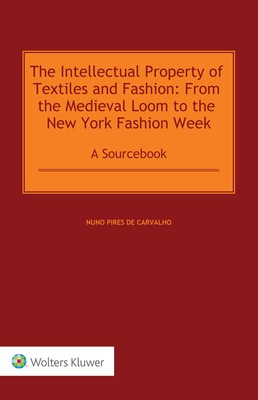
- Išsiųsime per 10–14 d.d.
- Autorius: Nuno Pires de Carvalho
- Leidėjas: Kluwer Law International
- ISBN-10: 9403537841
- ISBN-13: 9789403537849
- Formatas: 15.6 x 23.4 x 2.5 cm, kieti viršeliai
- Kalba: Anglų
- Extra -15 % nuolaida šiai knygai su kodu: ENG15
The Intellectual Property of Textiles and Fashion + nemokamas atvežimas! | knygos.lt
Atsiliepimai
Aprašymas
Rampant global counterfeiting has led the fashion industry to seek ever greater enforcement of its intellectual property (IP) rights. Yet, as this hugely informative book shows, this is not new. Fashion designers and entrepreneurs, as well as manufacturers and tradespeople in the broader textiles industry from which fashion springs, have always struggled to convert existing IP rules to an industry that was--and is--configured by the pressure of intrinsically fleeting consumer tastes and trends. The distinguished author, adding to the series of major works that have made him a leading authority on IP law, triumphantly reveals in great detail how society has constructed IP in association with textiles so as to accommodate it to the particular characteristics of fashion that emerged in the last century.
More than two hundred sources, many of them for the first time available in English, illustrated with fifty figures, allow the reader to directly encounter those who have made and continue to make the IP of textiles and fashion. The underlying raisons d'être of such aspects as the following become brilliantly clear:
- how fashion designers protect their creations against the spread of knock-offs;
- how fashion entrepreneurs appropriate prestige and reputation;
- how an iconic design becomes a brand or acquires secondary meaning; and
- how such inventions as the sewing machine and the cotton gin affected IP rights in textiles and fashion.
Each source is preceded by a note placing it in its social, economic, and legal context. The sources are structured in two chapters (business identifiers--trade and certification marks, geographical indications--and appropriation of knowledge and creativity--patents, designs, copyright, and trade secrets) so as to permit an easy understanding of the enchainment of important moments that have contributed to give IP for textiles and fashion its special configuration, in particular the transition from textile law to fashion law.
With this book, listening directly to the voices of those who have made and make IP, academics, students, magistrates, professionals, and the legal community as a whole will have a clear and realistic sense of how the combination of the entrepreneurial spirit with the imperatives of human consumption has designed and continues designing the special scope and limits of IP as applied to textiles and fashion.
EXTRA 15 % nuolaida
Kupono kodas: ENG15
Akcija baigiasi už 15:48:31
Nuolaidos kodas galioja perkant nuo 10 €. Nuolaidos nesumuojamos.

- Autorius: Nuno Pires de Carvalho
- Leidėjas: Kluwer Law International
- ISBN-10: 9403537841
- ISBN-13: 9789403537849
- Formatas: 15.6 x 23.4 x 2.5 cm, kieti viršeliai
- Kalba: Anglų
Rampant global counterfeiting has led the fashion industry to seek ever greater enforcement of its intellectual property (IP) rights. Yet, as this hugely informative book shows, this is not new. Fashion designers and entrepreneurs, as well as manufacturers and tradespeople in the broader textiles industry from which fashion springs, have always struggled to convert existing IP rules to an industry that was--and is--configured by the pressure of intrinsically fleeting consumer tastes and trends. The distinguished author, adding to the series of major works that have made him a leading authority on IP law, triumphantly reveals in great detail how society has constructed IP in association with textiles so as to accommodate it to the particular characteristics of fashion that emerged in the last century.
More than two hundred sources, many of them for the first time available in English, illustrated with fifty figures, allow the reader to directly encounter those who have made and continue to make the IP of textiles and fashion. The underlying raisons d'être of such aspects as the following become brilliantly clear:
- how fashion designers protect their creations against the spread of knock-offs;
- how fashion entrepreneurs appropriate prestige and reputation;
- how an iconic design becomes a brand or acquires secondary meaning; and
- how such inventions as the sewing machine and the cotton gin affected IP rights in textiles and fashion.
Each source is preceded by a note placing it in its social, economic, and legal context. The sources are structured in two chapters (business identifiers--trade and certification marks, geographical indications--and appropriation of knowledge and creativity--patents, designs, copyright, and trade secrets) so as to permit an easy understanding of the enchainment of important moments that have contributed to give IP for textiles and fashion its special configuration, in particular the transition from textile law to fashion law.
With this book, listening directly to the voices of those who have made and make IP, academics, students, magistrates, professionals, and the legal community as a whole will have a clear and realistic sense of how the combination of the entrepreneurial spirit with the imperatives of human consumption has designed and continues designing the special scope and limits of IP as applied to textiles and fashion.





Atsiliepimai